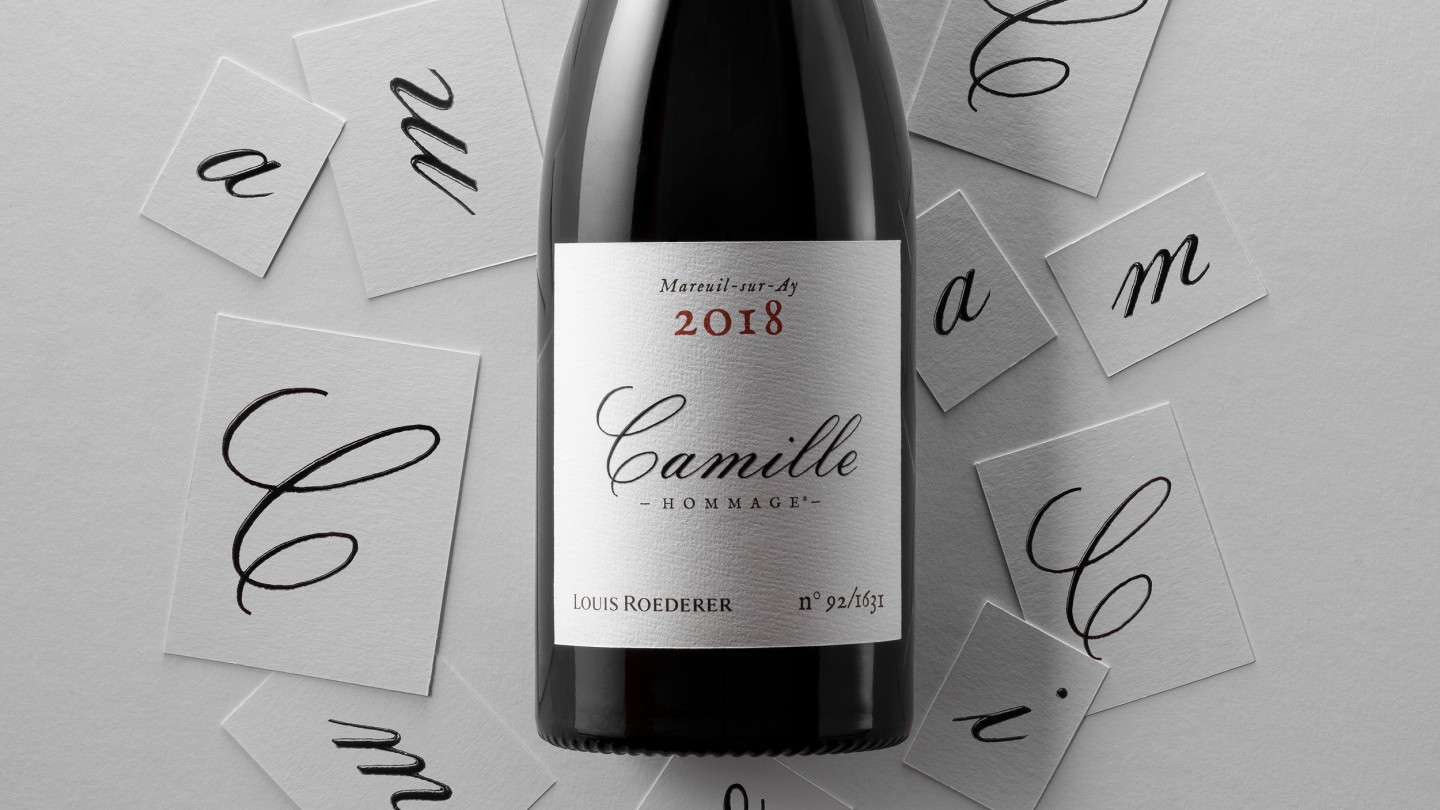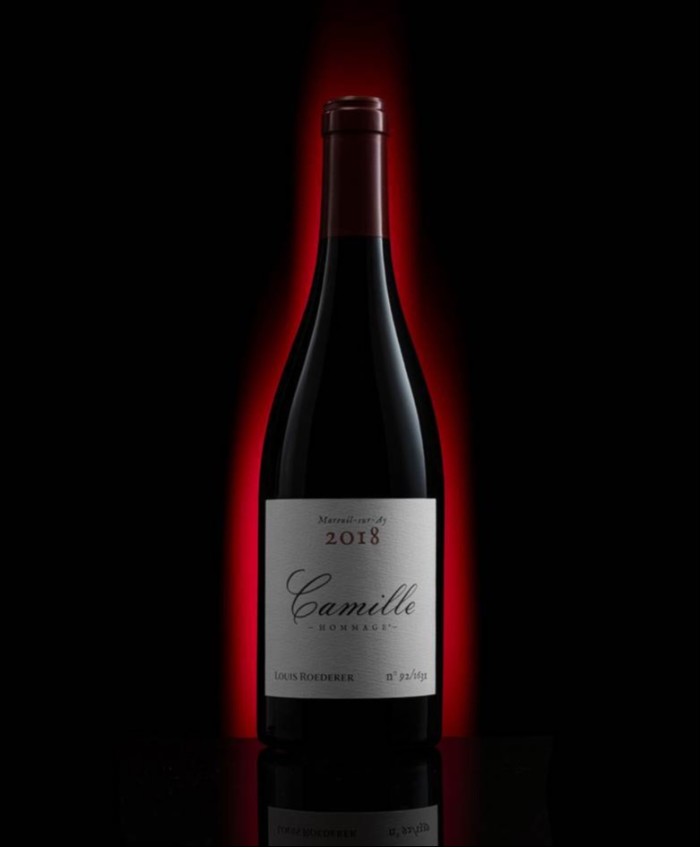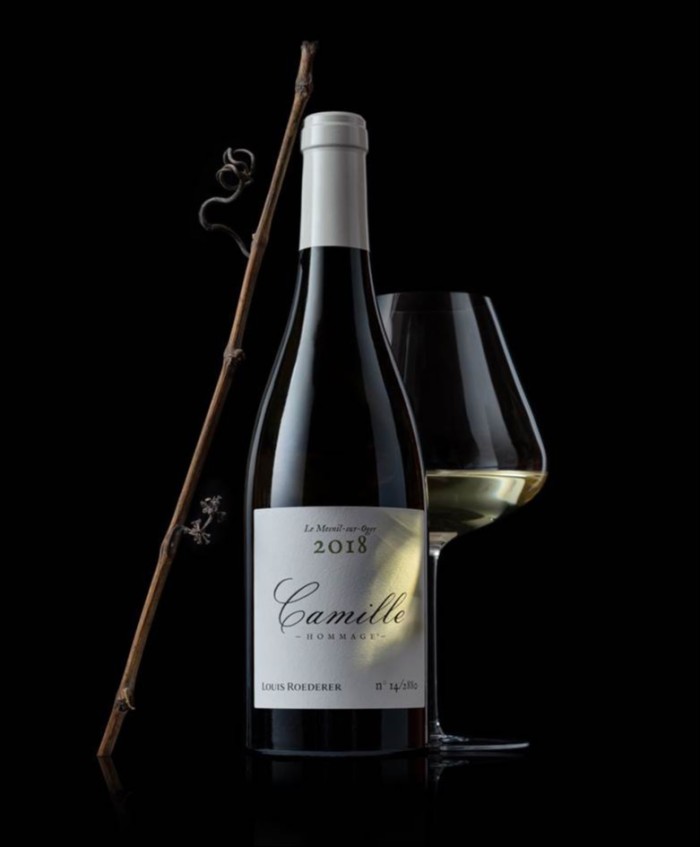Louis Roederer without the bubbles – all change in Champagne

Roula Khalaf, Editor of the FT, selects her favourite stories in this weekly newsletter.
Champagne Louis Roederer, maker of the eponymous champagne and prestige cuvée Cristal, has unveiled a new collection of still wines designed to showcase single-vineyard plots around the Coteaux Champenois – the still wine appellation that covers the same geographical area as Champagne. Named “Hommage à Camille” – in memory of Camille Olry-Roederer, who ran the house from 1932 to 1975 – the collection represents the house’s first foray into still wines for more than 50 years.
“We’ve been working on the idea of showcasing the terroir without bubbles since 2000,” says cellar master Jean-Baptiste Lécaillon. “We’d spent all this time converting our vineyards to organic and biodynamic in pursuit of more fruit, more depth, more ripeness, more terroir… It made sense to go the full experience.”
Hommage à Camille debuts with two wines – a red and a white – from the 2018 vintage. The 100 per cent pinot noir Camille Charmont 2018 hails from a specially planted, 0.43ha plot in the clay-rich Charmont lieu-dit in Mareuil-sur-Aÿ. Aged in a mix of oak and amphorae, and vinified with some whole bunches in the mix, it’s attractive and fresh, with lifted notes of violet, sloe and cherry. It has depth without richness, and a fine, suede-y tannin (1,631 bottles; £155 each).

The white, Camille Volibarts 2018, spotlights a 0.55ha plot of old chardonnay vines in the Volibarts lieu-dit in Le Mesnil-sur-Oger, in the heart of the Côte des Blancs. Lean and mineral, with Chablis-like notes of lime, apricot and green tea, the wine has Louis Roederer’s signature precision and clarity. It’s subtle (possibly a little too subtle?), and definitely benefits from being served a few degrees warmer than an average white. Lécaillon recommends decanting it and leaving it to come up to around 14 degrees before drinking – I found it really started to flower after 20 minutes or so in the glass (2,880 bottles; £130 each)
There are aspects of the project that echo the practices of neighbouring Burgundy. The Charmont plot, for example, was planted with a massal selection from Burgundy, and the vines trained, Burgundy-style, into a high, open canopy to promote ripening (contrary to what is usually practised in Champagne).
But if people come to these wines expecting a facsimile of Burgundy wines, says Lécaillon, they will be disappointed: “The idea is to try and be not Burgundian. Burgundy is larger, richer and more concentrated, with more tertiary flavours that go away from the fruit. Our wines have higher acidity, they are less flexible perhaps, but very dynamic, very energetic. Our challenge is to showcase this, but domesticate it – to make it a little more smiling.”

Still wine in Champagne is not a new thing – up until the mid-19th century, the appellation (and Louis Roederer) actually made more still wine than fizz. As demand for sparkling wine increased throughout the 20th century, production dwindled, and today Coteaux Champenois is a tiny proportion of overall production – the Comité Interprofessionnel du vin de Champagne estimates it to be around 75,000 bottles a year.
But there are signs of renewed interest in still wines among some of the region’s more innovative producers. Champagne Charles Heidsieck recently released its first Coteaux Champenois wines: four whites from the villages of Oger, Vertus, Montgueux and Villers-Marmery terroirs. Last year, Emmanuel Lassaigne of grower Jacques Lassaigne expanded his portfolio of still wines to include a red, and now has a rosé on the way; and the dynamic grower house Champagne Tarlant will also release up to nine still wines this year. Historically, Bollinger, Egly-Ouriet and Drappier have also had form in the field.
Why the change of heart? Lécaillon believes “it’s the same story as why we are seeing more and more grower champagnes, which is partly due to climate change. Forty years ago, making a single vineyard wine would have been impossible as we often had problems with unripe and rotten fruit. Being able to blend was key. But since the 1980s and 1990s, the fruit has been getting healthier and healthier, and the wines easier and easier to make. And today it’s possible to make a good single-vineyard wine almost anywhere in Champagne, in a way that would not have been possible 40 years ago. Coteaux Champenois is the next step – once you can do single vineyard champagne you can say, OK, let’s remove the bubbles and see what happens behind. It’s finally possible.”
“At the same time you’ve got all the changes in viticulture coming, more organic, fewer pesticides, fewer herbicides, yields going down. And a new generation coming through that is more artisan, more focused on craftsmanship, with a real feeling for the land and the place. It’s a very special moment in Champagne, a golden decade.”
Lécaillon readily admits that, so far at least, the economics of making still wine on prime Champagne terroir have not really stacked up for Louis Roederer.
“We chose not to release the ’14, ’15 and ’16 vintages as we weren’t happy with them, so that was a big loss. But we are lucky to be in a house that is not looking first at the economics. We think of it more as part of our R&D programme – a chance to explore and gain a better understanding of the terroir. To challenge ourselves and see what we can do.”
Lécaillon promises that the 2019 red will be “bigger shapes – with less new oak and more amphorae”. The white, by contrast, will probably be fleshed out with a little more new oak. Reports on early barrel samples are good.
And the Camille programme continues to grow. Louis Roederer already has plots earmarked for still wine in Dizy, Cumieres and other parts of Mareuil-sur-Aÿ, and there are plans to plant more vines next spring. “The idea is for it always to be a single vineyard wine,” says Lécaillon. “But maybe some years we won’t release a vintage. Maybe one day we will stop. It is a rare exercise.” Better taste them while you can.
Hommage à Camille wines will be available in May priced at £155 for Camille Charmont 2018 and £130 for Camille Volibarts 2018. Stockists include Harrods, Hedonism and the Finest Bubble, among other retailers.
Comments